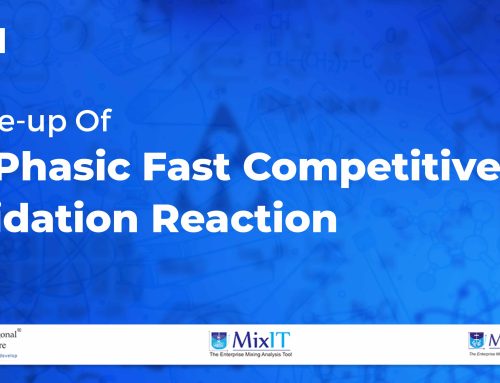San Antonio, TX, USA, March 30th, 2016
Chemists and Chemical Engineers are focused on transforming raw materials into value added products. A widely used unit operation in achieving this transformation is a stirred tank. Recipes developed in the lab need to be scaled for plant scale production. Process Engineers will need to fit this recipe in an existing tank; and depending on the production site, the available configurations would change. So the same product will need to be made in tanks of various configurations and this can be challenging. The table below list methods available for scale up & technology transfer including their advantage and disadvantages.
| Methods | Advantage | Disadvantage |
|---|---|---|
| Trial and error in pilot and plant scale | – Preferred method – The effects of process variables on product attributes are exactly determined | – Time consuming and expensive – The connection between cause and effect can be hard to establish |
| Historical experience / Organizational knowledge | – Extremely valuable, especially for similar chemistries and product types | – Scale up of new recipes can be challenging – A large issue is lack of archiving of this knowledge – When the SME leaves the knowledge leaves |
| Correlations | – Can help estimate a number of mixing parameters critical for scale up | – Very important to know the boundaries of the correlations – Can generate erroneous results very easily |
| CFD based calculations | – Framework can exactly mimic the mixing system; hence scale and configuration independent – Provides detailed flow profiles and related mixing parameters | – Difficult to learn and time consuming – Simplifications required when simulating complex recipes |
Quiet often we find that organizations have not had the discipline to archive all of the data available including observations and recommendations. The data can be very useful in creating custom correlations relevant to specific equipment for key mixing parameters. Product attributes can be correlated to measurable parameters. Further the archived knowledge can be effectively used to appropriately determine potential issues and possible resolution. This can be a gold mine of information.
Developing CFD models have been a challenge in the past. The time spent to create a virtual model can take days if not weeks. Today, tools are available to virtually simulate your process in a matter of a few hours.
Tridiagonal recommends a combination of all of the methods when scaling up stirred tank reactors. Most organization use may be 2 of the 4 suggested methods above. Should you not be taking advantage of all of the methods? Our experience shows a reduction is scale up time by more than 50% when using a multipronged approach to solving scale up problem.
Tridiagonal Solutions Inc is an advanced engineering solutions provider with expertise in process performance enhancement and product development solutions for industrial clients worldwide. Their portfolio includes process engineering, CFD, EFD, Discrete Element Modeling services and chemical mixing simulation products . Tridiagonal Solutions caters to the Chemical and Process, Oil and Gas, Consumer goods, Food, Electronics, Power Generation and Healthcare Industries. For more information please visit www.tridiagonal.com or call (210) 858-6192.
Tridiagonal Solutions Inc | 12703 Spectrum Drive | San Antonio | TX 78249 | USA
newsletter-mixit@Tridiagonal.com
Reference Links:










Leave A Comment